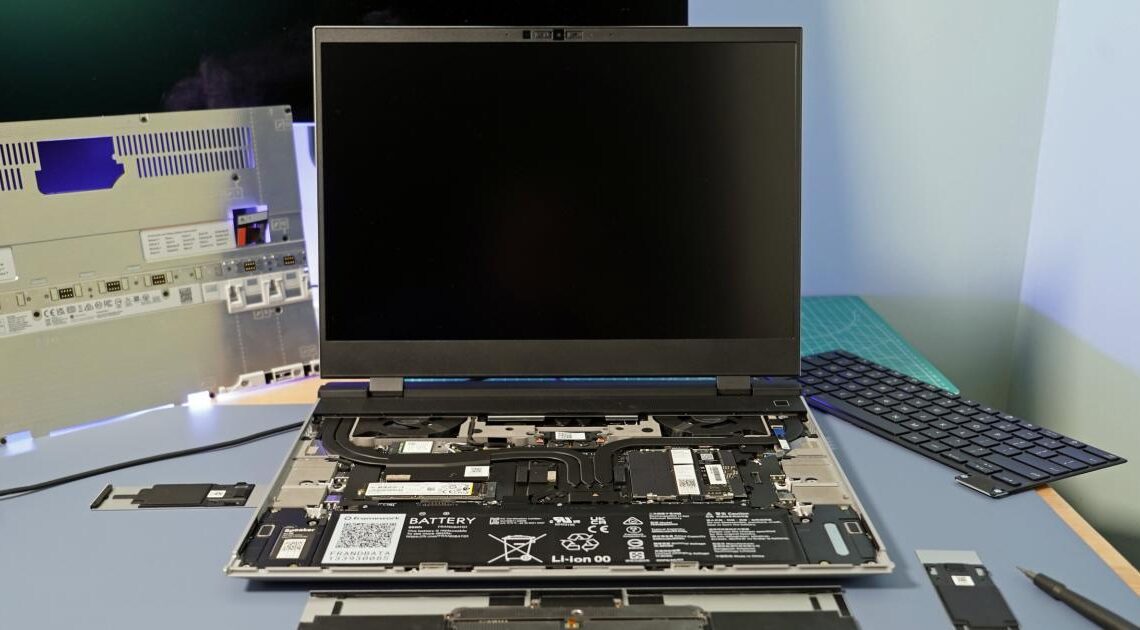I learned quickly that I wasn’t a fan of typing for too long on a left-aligned keyboard, so I yanked everything out and center-aligned the keyboard and trackpad instead. Instead of blank metal spacers around the keyboard, I installed some customizable LED modules, which basically exist to look pretty. That took me just two minutes. The keyboard, by the way, is wonderful to type on, with 1.5mm of key travel and a soft landing that easily dampens my heavy typing. The trackpad is also smooth to the touch and has a responsive click. It’s so great that I have to wonder how some Windows laptops still ship with frustrating touchpads — I’m looking at you, ZenBook 14 OLED.
There’s so much to love about the Framework Laptop 16, I was genuinely bummed to discover that it was a fairly mediocre gaming machine, at least for its high price. Across multiple games and benchmarks, it fell in line with laptops sporting NVIDIA’s RTX 4060 GPU, a card typically found in systems starting around $1,000 (and sometimes less). Framework isn’t completely out of line, though, Razer still sells the Blade 16 for $2,500 (down from $2,699). Remember, you’re paying for the magic of customizability, not just raw performance.
Our review unit included the Radeon GPU module, the Ryzen 7 chip, 16GB of RAM and a 512GB SSD, which would all cost at least $2,144 to configure. (That doesn’t include the cost of expansion cards or additional input modules.) For that amount of money, I really would have liked to see more than 61fps on average while playing Halo Infinite in 1440p with Ultra graphics settings. In Cyberpunk, I hit 53fps on average with maxed out graphics and mid-range ray tracing settings. Both games fared better in 1080p — 85fps in Halo and 76fps in Cyberpunk with the same settings — but still, those are numbers I’d typically only put up with in a budget gaming laptop.
As for benchmarks, the Framework Laptop 16 scored 200 points less than the Razer Blade 18 with an RTX 4060 in 3DMark’s TimeSpy Extreme. And as usual, the AMD GPU still lagged behind in the Port Royal ray tracing demo. Still, the Laptop 16 held up decently in the broader PCMark 10 benchmark, which tests productivity apps and not just gaming. The Framework machine hit a score of 8,129, putting it alongside some of the fastest machines we saw last year (it even beat out the Blade 18, which was running a beefy Intel i9-13950HX CPU).
While I would have liked to see higher numbers across the board,…

